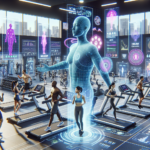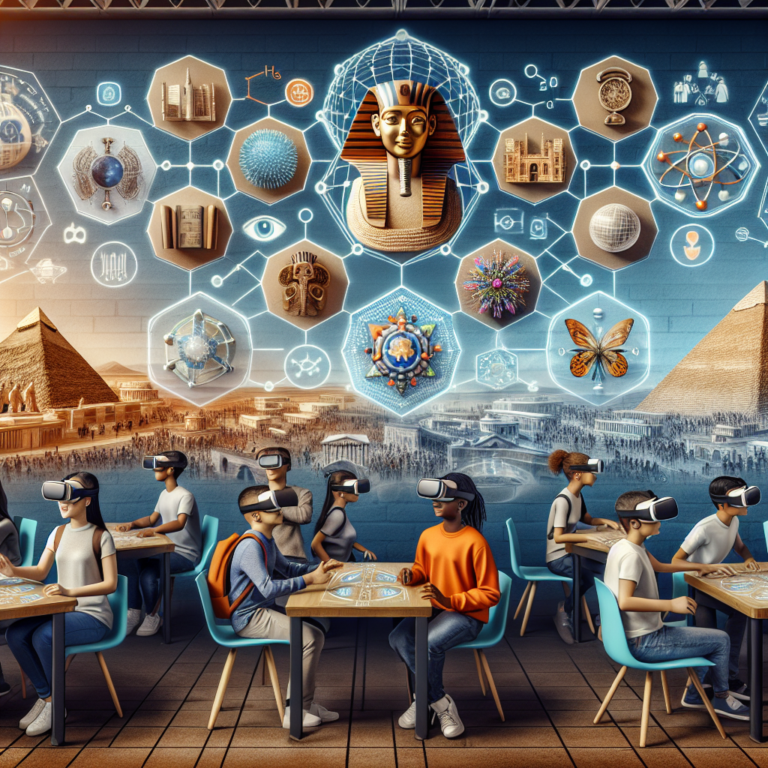What If Google Created an XR Education Platform That Transforms Learning?
Imagine a future where education goes beyond traditional classrooms and textbooks; where learning is an immersive, interactive, and engaging journey. With Google’s commitment to advancing technology and education, the idea of an XR Education Platform is not just an aspiration but a real possibility. This innovative approach could revolutionize the way educators and students interact through learning experiences.
The Impact of Extended Reality (XR) in Education
Extended Reality, which includes Augmented Reality (AR), Virtual Reality (VR), and Mixed Reality (MR), has the power to change educational experiences by making them more engaging. Platforms like Strivr and EON-XR have shown how effective XR can be in training and education by immersing learners in captivating content.
Key Features of a Google XR Education Platform
Seamless Integration with Educational Systems
A Google XR Education Platform would likely work well with current educational infrastructures, making it easy for schools to implement. It would come with strong security measures to protect user data, ensuring compliance with privacy laws.
Compatibility Across Devices
This platform would capitalize on Google’s expertise in cloud technology, allowing access to XR experiences on various devices, including smartphones, tablets, and VR headsets. This wide accessibility ensures that immersive learning reaches a larger audience, regardless of the device.
Creating Interactive and Immersive Content
The Google XR Education Platform would empower educators to design and share interactive lessons in AR and VR quickly. Utilizing tools like EON-XR, teachers could create, modify, and distribute content in just minutes, adding features such as voiceovers, interactive activities, and videos.
Advanced Learning Analytics
The platform would provide sophisticated analytics to monitor student performance, similar to Strivr’s offerings. Educators can track metrics like head movement and eye gaze to understand student engagement better. This information would help customize teaching styles to suit each student’s needs.
Augmented Object Intelligence
Building on Google’s research in XR-Objects, the XR Education Platform could integrate Augmented Object Intelligence (AOI). This feature would allow students to scan everyday objects with their devices and access detailed information, turning common items into exciting learning tools.
Real-Time Interaction with Objects
By using real-time object segmentation and multimodal language models, the platform would enable smooth interactions between the digital and physical worlds. Learners could engage with items in their surroundings, gaining information and completing tasks with ease.
Use Cases for an XR Learning Environment
Virtual Educational Tours
Students could take virtual field trips to historic sites, like the Great Sphinx of Giza, by utilizing Google’s Immersive Stream for XR. Imagine exploring these monuments in detail, dramatically enhancing the learning experience and making history come alive!
Innovative Science and Technology Learning
In science classes, learners could employ AR to visualize concepts that are typically challenging, such as molecular structures or machine operations. This approach would make abstract topics more understandable.
Interactive Language Learning
For those studying new languages, the platform could provide AR scenarios that mimic real-world conversations. By using speech recognition technology, students could practice their skills in an immersively interactive environment.
Hands-On Vocational Training
In vocational training, the XR Education Platform could simulate real-life scenarios like welding or surgery. This would allow students to practice important skills safely and effectively, preparing them for their future careers.
Advantages for Both Educators and Students
Boosted Engagement Levels
Immersive learning would significantly increase student engagement, making education not only more enjoyable but also more effective. Higher engagement could lead to improved retention and academic success.
Personalized Learning Experiences
Advanced analytics would allow teachers to tailor their instruction based on individual students’ needs, fostering a personalized educational journey for each learner.
Wider Accessibility to Quality Education
The platform aims to provide high-quality educational resources to a more extensive audience, including underserved communities. This effort would help eliminate educational disparities and promote equal opportunities for all.
Cost-Effective Learning Solutions
By utilizing cloud technology alongside device compatibility, the XR Education Platform would minimize the need for costly software and hardware. This could make immersive learning a more affordable option for educational institutions.
Support and Community Integration
Robust Technical Support
Google would likely offer comprehensive support for users, covering infrastructure integration, device management, and troubleshooting. This assistance would ensure a smooth transition to immersive learning, maximizing the platform’s effectiveness.
A Thriving Community and Resources
The platform would come with a vibrant community of developers, educators, and users. Alongside extensive documentation and resources, it would include quickstart guides and feature demonstrations, empowering users to leverage the platform fully.
In summary, the potential for a Google XR Education Platform offers endless possibilities for transforming education. By harnessing advanced technologies, we could provide immersive and engaging learning experiences tailored to modern instructional needs, enriching the educational landscape for learners everywhere. 🌍📚




0 Comments